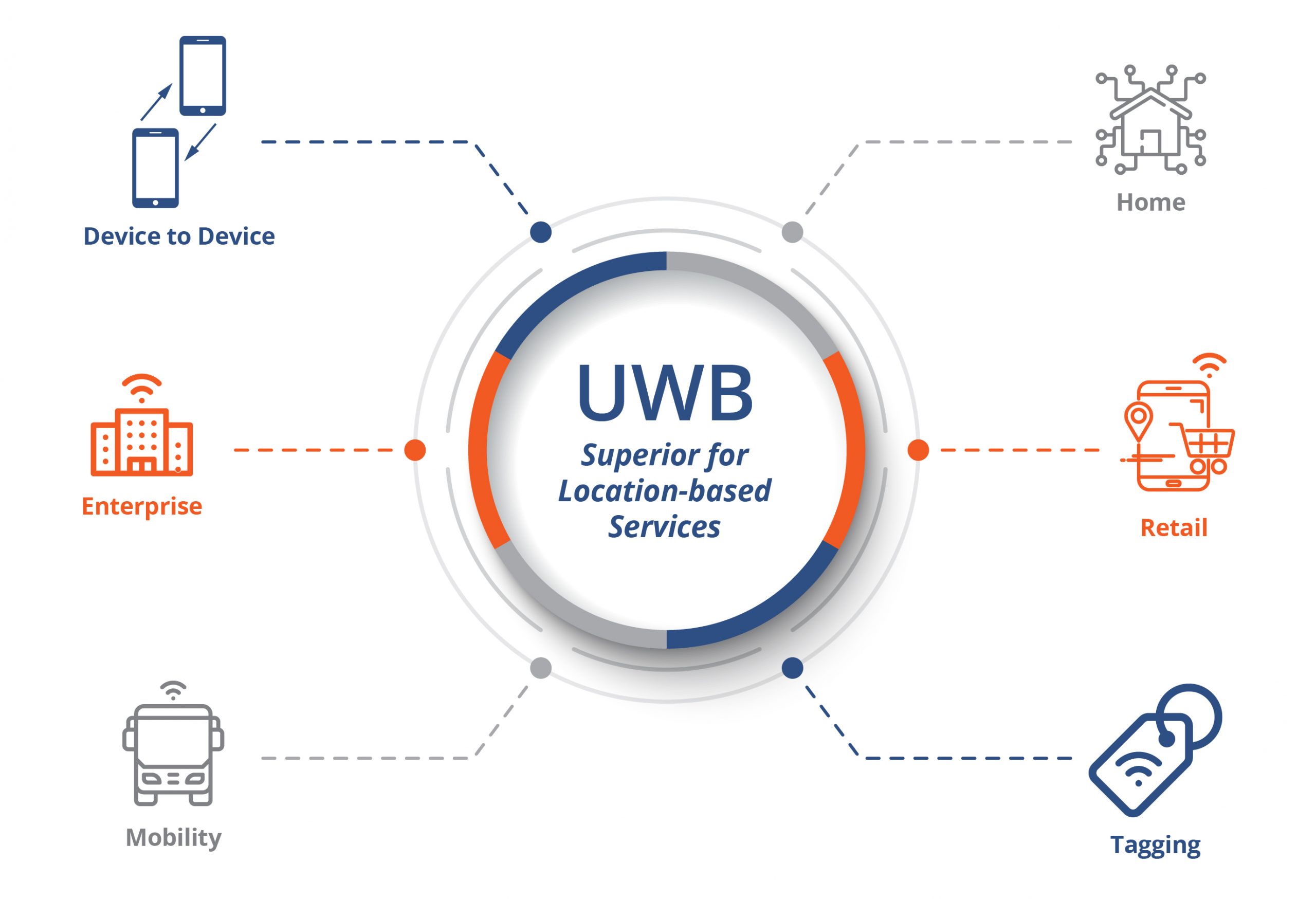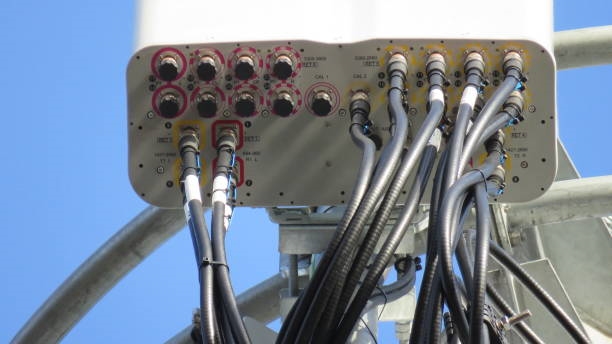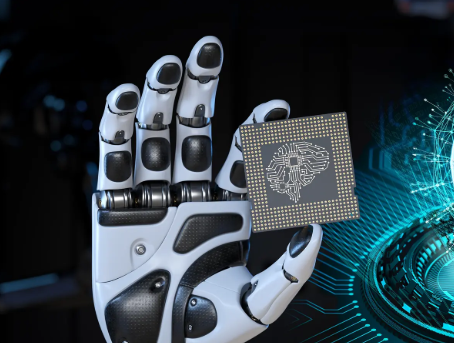Introduction
This article reviews how positioning technology started and how recent advances continue to change applications. It explains basic information about UWB, its advantages, and the industries and devices that can make effective use of UWB technology.
How positioning technology changed the world
Twenty years ago, the public did not have easy access to location information. In May 2000, GPS became available to the public for navigation and location services, such as finding nearby ATMs or gas stations. Before GPS, people navigated with maps, asking for directions, or trial and error.
About a decade ago, indoor navigation emerged, enabling coverage of shopping centers, airports, and other large buildings on digital maps. Location-based services helped users find stores and enabled targeted experiences, increasing the value of location data.
Location information is now integral to many systems. New positioning capabilities—especially precise micro location—allow tracking of nearly anything with improved reliability and accuracy, from keys or remotes to specific shelf positions in a store. Both B2B and consumer industries recognize the added value of precise indoor positioning for navigation, smart building automation, and real time operational visibility of assets and personnel.
Value of positioning
Embedded systems already allow devices to determine content and time and report that information. Sensors provide content, precise system clocks provide time, and devices exchange information via RF. Adding a location dimension gives devices contextual awareness and enables new context aware products and services.
Potential benefits of location awareness include:
- Efficiency: Real time asset location in factories and warehouses increases utilization, reduces search time, and improves just in time processes.
- Safety: Real time tracking of personnel, AGVs, and robots enables controlled interactions, prevents accidents, and restricts access to unsafe areas.
- Decision support: Knowing positions in real time supports contextual decisions, such as adjusting audio by room occupancy or enabling object control by pointing at the object.
- Security: Verifiable position information can serve as credentials for access control, protecting physical assets, data, and communications.
The ability to determine positions enables applications across healthcare, security, smart homes, fitness, smart cities, automotive, and industrial domains. UWB enabled real time location functionality is expanding the set of practical use cases.
Why a new real time positioning technology is needed
To realize the full potential of location services, the technology must meet application and environmental requirements. High accuracy is an obvious need: object and personnel positioning often require centimeter level precision, whereas traditional technologies such as GPS provide meter level accuracy.
Accuracy alone is insufficient. The technology must also:
- Be highly reliable in challenging environments
- Scale to thousands of assets and people in large venues
- Consume low power
- Be cost effective
- Be embeddable across devices, from high end smartphones to simple asset tags
- Operate in real time, since location is tied to motion
BLE and WiFi have been used for positioning because of their ubiquity. However, they were not designed for real time, precise micro location. BLE is optimized for low power data communication but typically delivers meter level accuracy that varies with the environment. WiFi and BLE positioning often rely on received signal strength and require significant processing and sampling to produce a useful location estimate, which increases latency and power consumption.
UWB was developed to meet the specific needs of real time positioning applications.
Introduction to UWB
UWB is an IEEE 802.15.4a/z standard technology optimized for secure, precise micro location. It meets the requirements outlined above. Like GPS, UWB can significantly increase the value of location information by improving accuracy and reliability.
Key UWB characteristics include:
- Extreme accuracy: UWB can locate people and objects to within a few centimeters—about 100 times more accurate than WiFi or BLE. This is critical for tracking small items or determining which side of a wall an object is on.
- Robustness: UWB is less affected by multipath and interference, which challenge RF measurements indoors.
- Low latency: UWB updates much faster than GPS—up to 1,000 updates per second—and is orders of magnitude faster than BLE beacons, making it suitable for fast moving objects such as drones.
- Low power and cost: UWB devices can be powered by small batteries and are cost competitive with other mainstream electronic technologies.
- Single point ranging: UWB can provide accurate position from a single measurement point, whereas other RF technologies often require multiple samples and filtering.
- Security: UWB leverages protocol level distance checks and IEEE specified measures that make relay attacks difficult.
Comparing UWB with other standards
Designing an indoor positioning system requires evaluating multiple factors and selecting the technology that best fits the application. Coverage, accuracy, reliability, and other characteristics differ among available technologies.Key differences:
Infrastructure range and cost
Range and cost are related: larger radio range reduces the number of infrastructure devices needed in a building, lowering deployment and maintenance costs. UWB typically covers 50–70 meters, BLE positioning applications typically cover 10–20 meters, and WiFi roughly 40–50 meters. BLE and WiFi positioning commonly rely on signal strength, so accuracy decreases rapidly with distance. UWB uses time of flight measurements, so accuracy remains consistent across its working range.
Theoretical distance and algorithm precision together determine anchor spacing. For equivalent area coverage, UWB requires fewer anchors than BLE or WiFi, reducing infrastructure costs.
Data communication rate
An indoor positioning system often needs to collect sensor data from embedded devices as well. Using multiple technologies increases complexity and cost. UWB offers a data channel up to 27 Mbps, suitable for rapid, efficient sensor data collection. Work continues in standards bodies to increase rates beyond 27 Mbps.
Scalability
For large deployments, the number of simultaneous devices matters. Factories may require tracking thousands of assets. Due to very short packet durations, UWB systems can handle thousands of devices, while WiFi and BLE deployments typically handle only hundreds.
Latency
System latency—the time between position reports—is crucial for moving devices. UWB's short packets and precise ranging enable sub millisecond latency, enabling true real time detection. Other technologies may take seconds to obtain and compute position information.
UWB applications
UWB has been deployed across more than 40 industry segments, including consumer, automotive, industrial, and robotics applications. Representative uses include:
- Consumer: connected home, retail, robots, TV/set top boxes, AR/VR, sports tracking, and drones.
- Automotive: secure keyless entry and start using distance measurement and TOF based defenses against relay attacks.
- Industrial: building control, healthcare, agriculture, security, factory automation, robotics, and mining.
In manufacturing, industrial logistics, smart home perimeters, and automotive Industry 4.0 scenarios, UWB increases visibility of people and assets, improving operational efficiency, safety, and tracking performance.
Representative use cases
- Home security / connected home
UWB enables seamless user experiences for entry and alarm control: a smartphone in a pocket can indicate approach or departure without manual activation. Other applications include directional remote controls and object aware phone controls by using position and orientation to select the correct device.
- Industry 4.0
UWB provides precise, reliable location for people and objects to improve efficiency, safety, and asset tracking. It can warn workers near hazardous zones, confirm safe evacuation during emergencies, and support digital twin use cases by providing near real time location data for assets like forklifts and tools.
- Automotive
UWB enabled key fobs support secure ranging and communications to prevent vehicle theft, leveraging TOF and IEEE 802.15.4z security measures to mitigate relay attacks.
- Robotics
UWB enables precise navigation for robots, from robotic lawn mowers to AGVs that deliver parts to specific workstations. Personal transport robots can follow users and carry heavy loads safely and accurately.
- Sports
With centimeter accuracy and low latency, UWB is suitable for motion analysis in sports, enabling precise measurements of fast athlete movements without significant measurement error.
- Enterprise
UWB supports reliable social distancing solutions and secure hands free access control, improving convenience and safety in environments such as hospitals.
 ALLPCB
ALLPCB








